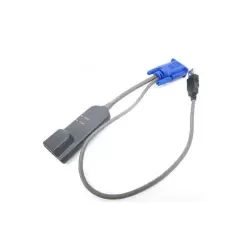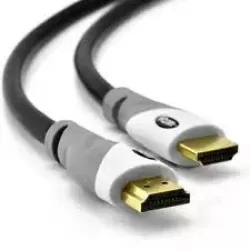Used Cables or Refurbished Cables of Dell, Cisco, EMC, Fujitsu, D-Link, Molex, Polycom, Panduit, Quantum, Hitachi, NetApp, HP, IBM, and SUN in UAE.
What is a cable?
A cable is a bundle of wires or cords that are bound together to transmit electrical signals, data, or power. Cables can come in a variety of forms, such as twisted pair, coaxial, or fiber optic, and can be used for various purposes such as connecting devices, transmitting audio and video signals, providing internet access, or delivering power to electronic devices. Cables can be found in many different settings, from home entertainment systems to industrial machinery to telecommunications infrastructure.
Types of Cables
There are many types of cables available, each designed for specific applications. Here are some of the most common types of cables:
Coaxial Cable:
A type of cable with a single conductor at the center, surrounded by a layer of insulation and a second layer of shielding. It is used for cable television, the internet, and other high-frequency signals.
Twisted Pair Cable:
A type of cable with two or more twisted insulated copper wires. It is commonly used in Ethernet networks, telephony, and other data transmission applications.
Fiber Optic Cable:
A cable consisting of one or more thin glass or plastic fibers, surrounded by protective insulation and sheathing. It is used for high-speed data transmission, including the Internet and telecommunications.
USB Cable:
A cable is used to connect devices such as computers, printers, and smartphones. It typically has a rectangular connector on one end and a USB Type-A, Type-B, or Type-C connector on the other end.
Power Cable:
A cable is used to transmit electrical power from one device to another. It is commonly used in homes and buildings to connect electrical appliances to a power source.
HDMI Cable:
A cable is used to connect devices such as televisions, video game consoles, and Blu-ray players. It transmits audio and video signals in high definition.
Audio Cable:
A cable is used to transmit audio signals from one device to another. It is commonly used to connect audio devices such as headphones, microphones, and speakers.
VGA Cable:
A cable is used to connect a computer or laptop to a monitor or projector. It transmits video signals in analog format.
Ethernet Cable:
A type of twisted pair cable used for local area networks (LANs) to connect computers, routers, and switches. It transmits data at high speeds and is commonly used in offices and homes.
These are just a few of the many types of cables available, each with unique features and applications.
Laptop, server, and network cables
Laptop, server, and network cables are all types of cables that are used to connect various devices to each other in a computing environment. Here's a brief overview of each type:
Laptop Cables:
These are cables used to connect laptops to other devices, such as external monitors, projectors, or docking stations. The most common types of laptop cables include HDMI, VGA, and USB cables.
Server Cables:
These are cables used to connect servers to other devices, such as storage systems, network switches, or other servers in a cluster. The most common types of server cables include Ethernet cables, fiber optic cables, and SAS cables.
Network Cables:
These are cables used to connect network devices, such as computers, routers, switches, and servers, to each other. The most common types of network cables include Ethernet cables (such as Cat5e, Cat6, and Cat7), fiber optic cables, and coaxial cables.
In general, these types of cables are designed to be highly reliable and efficient, with minimal signal loss and interference. They are also designed to be easy to install and maintain, with standardized connectors and cabling standards that make it easy to connect different devices to each other. Whether you're setting up a home network, a small business server room, or a large enterprise data center.
Future of Cables
The future of cables is likely to involve a range of new technologies and innovations that will make them even more versatile, efficient, and reliable. Here are some potential trends and developments that could shape the future of cables:
Higher Bandwidth:
As demand for faster data transmission continues to grow, cables will need to support higher bandwidths. This could involve the development of new materials and technologies that allow for faster data rates and lower latency.
Wireless Charging:
The development of wireless charging technology could reduce the need for cables to transmit power. This could involve the use of magnetic fields or radio waves to transmit power wirelessly, eliminating the need for physical cables.
Improved Materials:
Advances in materials science could lead to the development of new, lighter, and stronger materials for use in cables. This could include the use of carbon nanotubes, graphene, or other advanced materials that offer superior conductivity, durability, and flexibility.
Smaller Form Factors:
As devices become smaller and more portable, cables will need to be smaller and more flexible to accommodate them. This could involve the development of ultra-thin cables or even cables that are woven into fabric.
Improved Security:
With the increasing importance of data security, cables may need to incorporate advanced encryption and authentication technologies to prevent hacking and data theft.
Overall, the future of cables is likely to involve a range of exciting new technologies and innovations that will make them even more versatile and useful for a range of applications.
Importance of cables
Cables are an essential component of modern communication and power systems. They are used to transmit signals, data, and power from one device to another. Without cables, we wouldn't be able to connect devices to each other, access the internet, or even charge our phones.
The importance of cables can be seen in various fields such as telecommunications, computer networking, electricity transmission, and transportation. In telecommunications, cables are used to connect phones, modems, and other devices to the internet or to a phone network. In computer networking, cables are used to connect computers, routers, and switches to create a local area network (LAN) or a wide area network (WAN).
In the field of electricity transmission, cables are used to transmit electrical power from power stations to homes and businesses. They are also used to connect renewable energy sources such as wind turbines and solar panels to the power grid. Cables are also used in transportation, for example, in electric vehicles, where they connect the battery to the motor.
A cable is a bundle of wires or cords that are insulated and often sheathed together, used to transmit electrical power, data, or signals between devices.
Cables are used to transmit electrical power, data, or signals between devices. They are commonly used in various industries, including telecommunications, computing, power distribution, and audio-visual applications.
You can find quality cables from a variety of sources, including reputable online retailers, electronics stores, and specialty cable suppliers. It's important to look for cables that are made with high-quality materials and are designed to meet industry standards for performance and reliability. Additionally, it's often a good idea to read reviews and compare prices to ensure that you're getting good value for your money.












